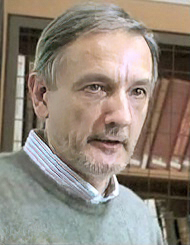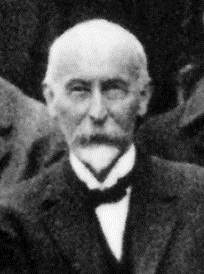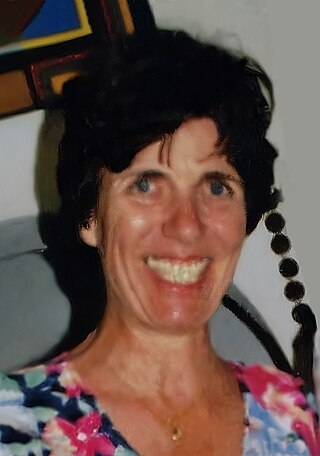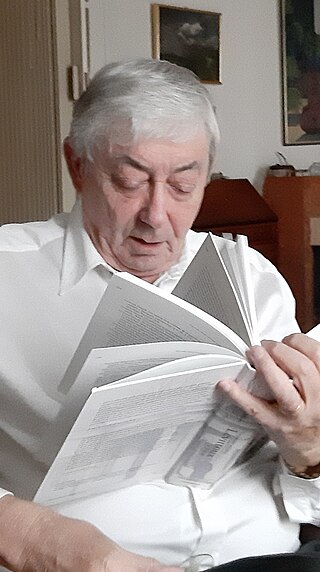
Louis Victor Pierre Raymond, 7th Duc de Broglie was a French aristocrat and physicist who made groundbreaking contributions to quantum theory. In his 1924 PhD thesis, he postulated the wave nature of electrons and suggested that all matter has wave properties. This concept is known as the de Broglie hypothesis, an example of wave–particle duality, and forms a central part of the theory of quantum mechanics.
Abhay Vasant Ashtekar is an Indian theoretical physicist who created Ashtekar variables and is one of the founders of loop quantum gravity and its subfield loop quantum cosmology. Ashtekar has also written a number of descriptions of loop quantum gravity that are accessible to non-physicists. He is an Evan Pugh Professor Emeritus of Physics and former Director of the Institute for Gravitational Physics and Geometry and Center for Fundamental Theory at Pennsylvania State University.

Brian David Josephson is a British theoretical physicist and professor emeritus of physics at the University of Cambridge. Best known for his pioneering work on superconductivity and quantum tunnelling, he was awarded the Nobel Prize in Physics in 1973 for his prediction of the Josephson effect, made in 1962 when he was a 22-year-old PhD student at Cambridge University. Josephson is the first Welshman to have won a Nobel Prize in Physics. He shared the prize with physicists Leo Esaki and Ivar Giaever, who jointly received half the award for their own work on quantum tunnelling.

Jean-Pierre Vigier was a French theoretical physicist, known for his work on the foundations of physics, in particular on his stochastic interpretation of quantum physics.
In theoretical physics, the Einstein–Cartan theory, also known as the Einstein–Cartan–Sciama–Kibble theory, is a classical theory of gravitation, one of several alternatives to general relativity. The theory was first proposed by Élie Cartan in 1922.

Jean Antoine Edmond Marie Becquerel was a French physicist, the son of Antoine-Henri Becquerel. He worked on a range of experimental physics topics including magnetic effects on the optical properties of materials, and the effects of low-temperature on magnetic susceptibility. He was among the early teachers of relativity and quantum physics in France.
In the history of physics, aether theories proposed the existence of a medium, a space-filling substance or field as a transmission medium for the propagation of electromagnetic or gravitational forces. Since the development of special relativity, theories using a substantial aether fell out of use in modern physics, and are now replaced by more abstract models.

André Lichnerowicz was a French differential geometer and mathematical physicist. He is considered the founder of modern Poisson geometry.

The Solvay Conferences have been devoted to preeminent unsolved problems in both physics and chemistry. They began with the historic invitation-only 1911 Solvay Conference on Physics, considered a turning point in the world of physics, and are ongoing.

Charles-Albert-Marie Costa, Marquis de Beauregard was a French historian and politician. He also fought in the Franco-Prussian War. His works include a trilogy on Charles Albert of Sardinia.

Laurent Nottale is an astrophysicist, a retired director of research at CNRS, and a researcher at the Paris Observatory. He is the author and inventor of the theory of scale relativity, which aims to unify quantum physics and relativity theory.

Charles-Eugène Guye was a Swiss physicist. He was born in Saint-Christophe (Champvent) and died in Geneva.
Franz Rudolf Paul Gruner was a Swiss physicist.
Gustave Juvet was a Swiss mathematician.

Marie-Antoinette Tonnelat was a French theoretical physicist. Her physics research focused on relativistic quantum mechanics under the influence of gravity. Along with the help of Albert Einstein and Erwin Schrödinger, she attempted to propose one of the first unified field theories. She is also known for her work on the history of special and general relativity.
Édouard Guillaume (1881–1959) was a Swiss physicist and patent examiner, notorious for his published papers attacking Albert Einstein's theory of special relativity. He is also noteworthy for his work on mathematical economics.

The Institut Suisse des Sciences Noétiques or ISSNOE is an established public utility nonprofit foundation dedicated to the scientific and comparative study of consciousness. The institute's research focuses on altered states of consciousness (ASC), like near-death experiences (NDEs), extrasensory perceptions (ESPs), and out-of-body experiences (OBEs).

Nathalie Deruelle is a French physicist specializing in general relativity and known for her research on the two-body problem in general relativity and on cosmological perturbation theory.

Richard Kerner is a French theoretical physicist andProfessor Emeritus of Pierre and Marie Curie University whose research extends into gravitation, cosmology, field theory, solid-state physics, noncommutative geometry, quantum mechanics and mathematical and theoretical biology.

Paulette Destouches-Février was a French physicist, philosopher of science, and logician.













